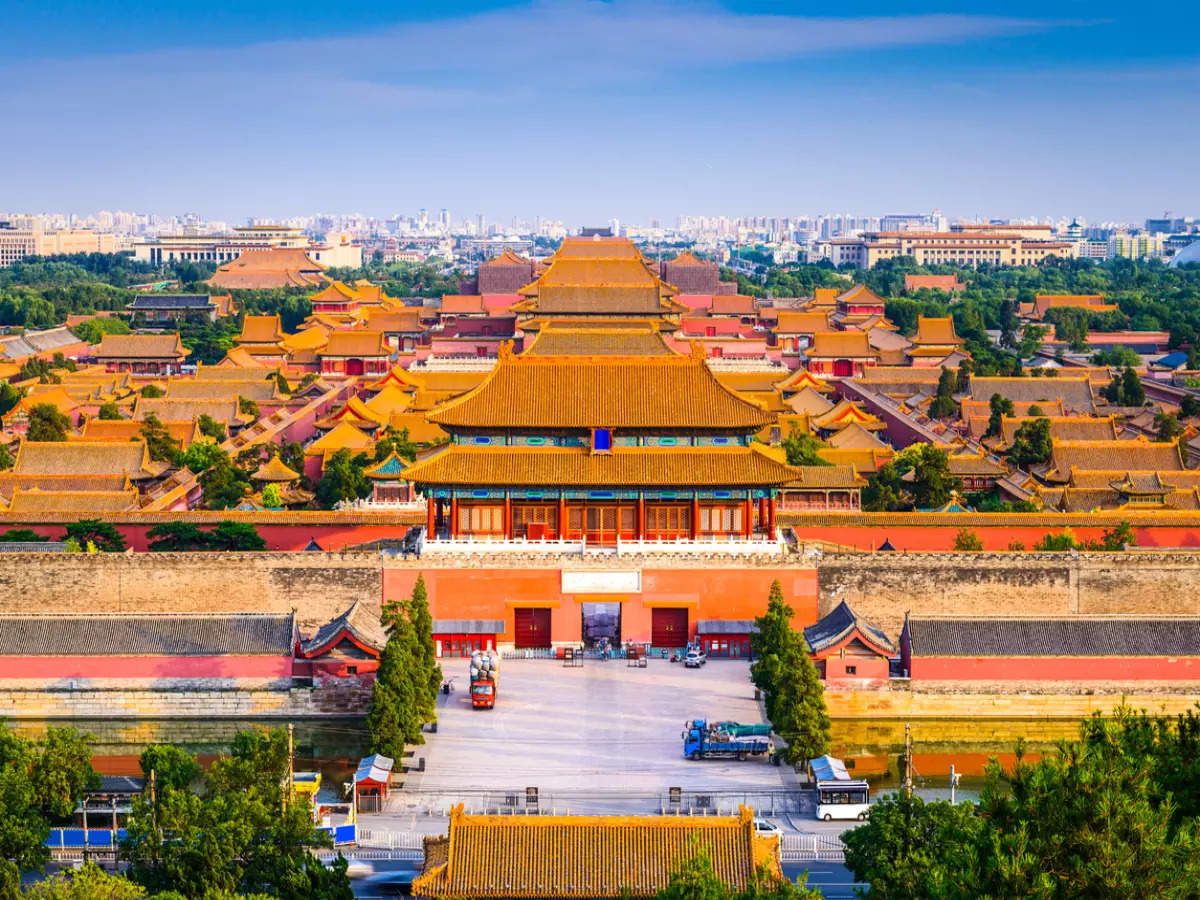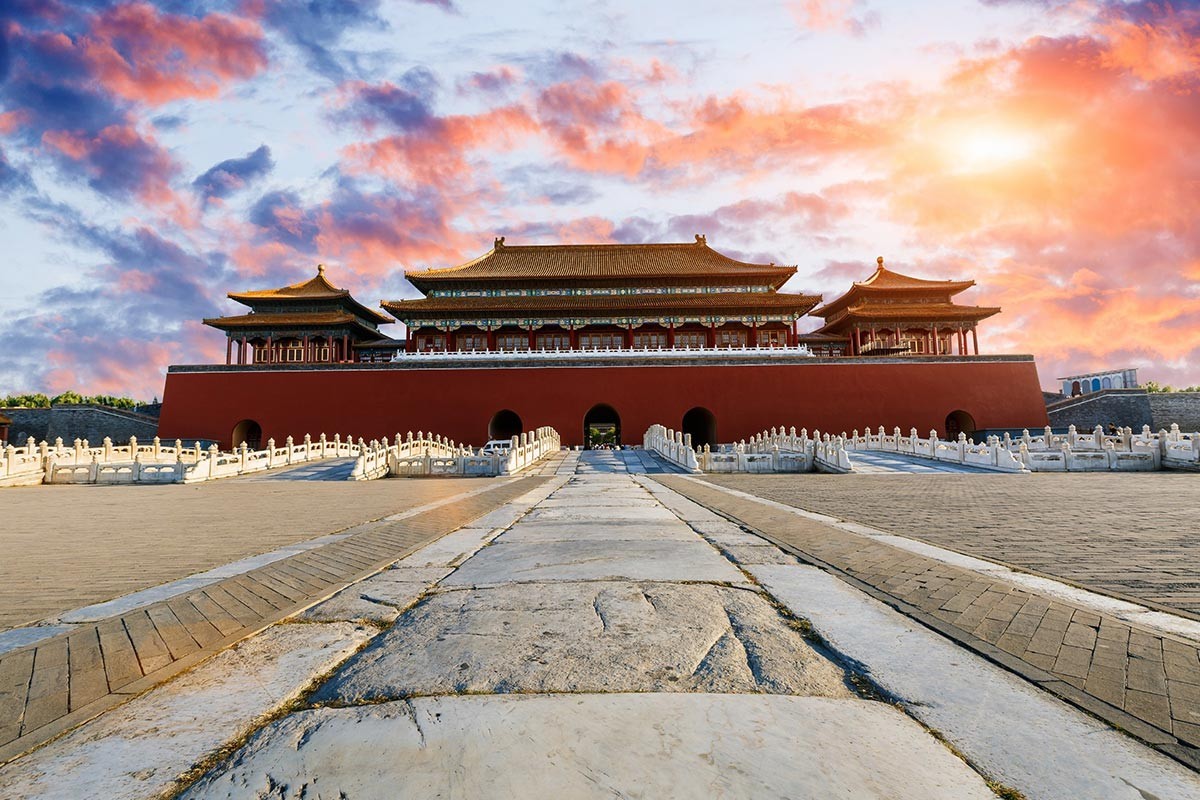Forbidden City
The Forbidden City, a majestic symbol of China’s imperial past, stands as a testament to centuries of history and culture. Designated as a UNESCO World Heritage Site, this architectural marvel has captured the imagination of visitors worldwide. Let’s embark on a journey through time and explore the Forbidden City‘s hidden treasures. The Forbidden City, located in the heart of Beijing, China, is a captivating imperial palace complex that served as the home to Chinese emperors for nearly 500 years. Constructed during the Ming Dynasty in the early 15th century, this architectural marvel spans 180 acres and consists of over 980 surviving buildings. Renowned for its exquisite design, intricate artwork, and historical significance, the Forbidden City stands as a UNESCO World Heritage Site and remains an iconic symbol of China’s imperial past.
Architectural Marvel
The Forbidden City’s layout and design showcase the brilliance of traditional Chinese architecture. The intricate details of the palatial complex reflect the cultural and aesthetic values of the Ming and Qing dynasties. Constructed between 1406 and 1420, the represents the pinnacle of traditional Chinese palatial architecture. The meticulous design, featuring 980 surviving buildings, reflects the cultural richness of the Ming and Qing periods. It served as the imperial palace for almost 500 years, witnessing the ebb and flow of Chinese history. An architectural marvel is a structure characterized by exceptional design, engineering, and aesthetic qualities, often eliciting admiration and awe. These marvels can range from historic monuments to modern skyscrapers, showcasing innovation, creativity, and technical prowess. Architectural marvels are not only visually striking but also contribute to the cultural, historical, and technological tapestry of the regions they inhabit. Examples include iconic structures like the Taj Mahal, the Eiffel Tower, and the Burj Khalifa, each standing as a testament to human ingenuity in the realm of construction and design.
Historical Significance
Once the imperial palace during the Ming and Qing dynasties, the For bidden City served as the political and cultural heart of China. It witnessed the rise and fall of emperors, shaping the course of the nation’s history. Constructed between 1406 and 1420, the Forbidden City stands as a testament to the grandeur of ancient Chinese civilization. Its immense scale, encompassing 180 acres and featuring over 8,704 rooms, reflects the opulence and power of the emperors who once walked its hallowed halls. The name “Forbidden City” itself evokes curiosity, hinting at a mystical past. Explore the myths and legends surrounding this grand palace and uncover the secrets hidden within its walls. As one enters the Forbidden City through the formidable Meridian Gate, a profound sense of symbolism unfolds. The gate, flanked by mythical creatures, serves not only as a physical barrier but also as a representation of warding off evil spirits. The intricately carved figures, from dragons to phoenixes, symbolize the emperor’s divine authority and the harmony he sought to maintain
Emperors and Dynasties
Walk in the footsteps of emperors as we delve into the lives of key rulers who called the Forbidden City home. Discover how different dynasties left their mark on the palace’s architecture and legacy. The Forbidden City, standing stoically in Beijing, echoes with the footfalls of emperors who once ruled from its opulent chambers. To truly understand the essence of this architectural marvel, we must delve into the chronicles of emperors and dynasties that shaped the Forbidden City’s storied history. Transformed into a museum open to the public, the Forbidden City welcomes curious minds from around the globe. Learn about ongoing restoration efforts and projects dedicated to preserving this cultural gem. The Forbidden City, standing proudly in the heart of Beijing, transcends the boundaries of time, maintaining its eternal majesty while coexisting with the pulse of modernity. Today, this architectural marvel continues to captivate visitors and scholars alike, offering a living testament to China’s rich heritage.
Visitor Experience
Navigate through the’s vast courtyards and halls, visiting iconic attractions. Gain insider tips for an enriching and memorable experience during your visit. Embarking on a journey to the Forbidden City is not merely a visit; it’s an odyssey through the annals of Chinese history. The visitor experience within this architectural marvel transcends the ordinary, offering a captivating immersion into the splendors of imperial China. Uncover the profound impact of the Forbidden City on Chinese culture and identity. Explore its representation in modern media, literature, and its enduring influence. Constructed during the Ming Dynasty and expanded under the Qing Dynasty, the Forbidden City reflects a harmonious synthesis of various Chinese architectural styles. From the intricate woodwork to the vibrant color palette, each element is a nod to the diverse cultural influences that shaped imperial China.
Challenges and Controversies
While the Forbidden City stands as a cultural beacon, challenges such as preservation and ownership controversies persist. Understand the delicate balance between preserving history and addressing modern-day concerns. While the Forbidden City stands as an indomitable symbol of China’s rich history, it is not immune to challenges and controversies that have shaped its narrative over the years. Delving into these complexities provides a nuanced understanding of the ongoing efforts to preserve this cultural treasure. From blockbuster movies to literary masterpieces, the Forbidden City has left an indelible mark on pop culture. Examine its portrayal in various forms of entertainment and its role in shaping global perceptions. The Forbidden City’s grandeur has found its way into the pages of novels and poetic odes, where writers delve into its imperial corridors, using it as a backdrop for tales that blend history with fiction. The Forbidden City becomes more than a setting; it transforms into a character, its walls echoing with the whispers of emperors and the shuffling of dynasties.
Educational Initiatives
Delve into the educational programs within the Forbidden City, fostering a deeper understanding of China’s rich history. Explore collaborations with schools and universities to promote cultural exchange. As the Forbidden City stands as a guardian of China’s historical legacy, it also embraces a pivotal role in fostering education. Initiatives within this architectural marvel extend beyond its imposing walls, reaching global audiences through innovative educational programs that unlock the mysteries of imperial China. Discover how technology plays a pivotal role in preserving the artifacts and structures. From digital initiatives to cutting-edge conservation methods, innovation meets tradition. The Forbidden City, with its timeless allure, has not only etched its presence in the annals of history but has also permeated the realms of pop culture. From literature to cinema, the Forbidden City stands as a magnetic muse, captivating the imaginations of artists and creators across various mediums.
Social Media Presence
In the age of social media, the has embraced online platforms. Uncover the impact of hashtags, challenges, and user-generated content on its popularity. The Forbidden City, steeped in centuries of history, has seamlessly transitioned into the digital age, establishing a formidable presence across various social media platforms. Its online allure not only amplifies its cultural significance but also engages audiences globally, fostering a virtual connection to this architectural marvel. What lies ahead for the Forbidden City? Explore future plans, potential challenges, and opportunities as this cultural icon continues to evolve. As we stand at the intersection of history and modernity, the faces a future rife with opportunities and challenges. Charting its course forward involves a delicate dance between preservation and adaptation, ensuring that this cultural gem continues to shine in the evolving tapestry of time.
Summary
As we conclude our journey through the Forb, we reflect on its rich history and cultural significance. From ancient dynasties to modern-day challenges, this grand palace stands as a timeless testament to China’s enduring legacy.
